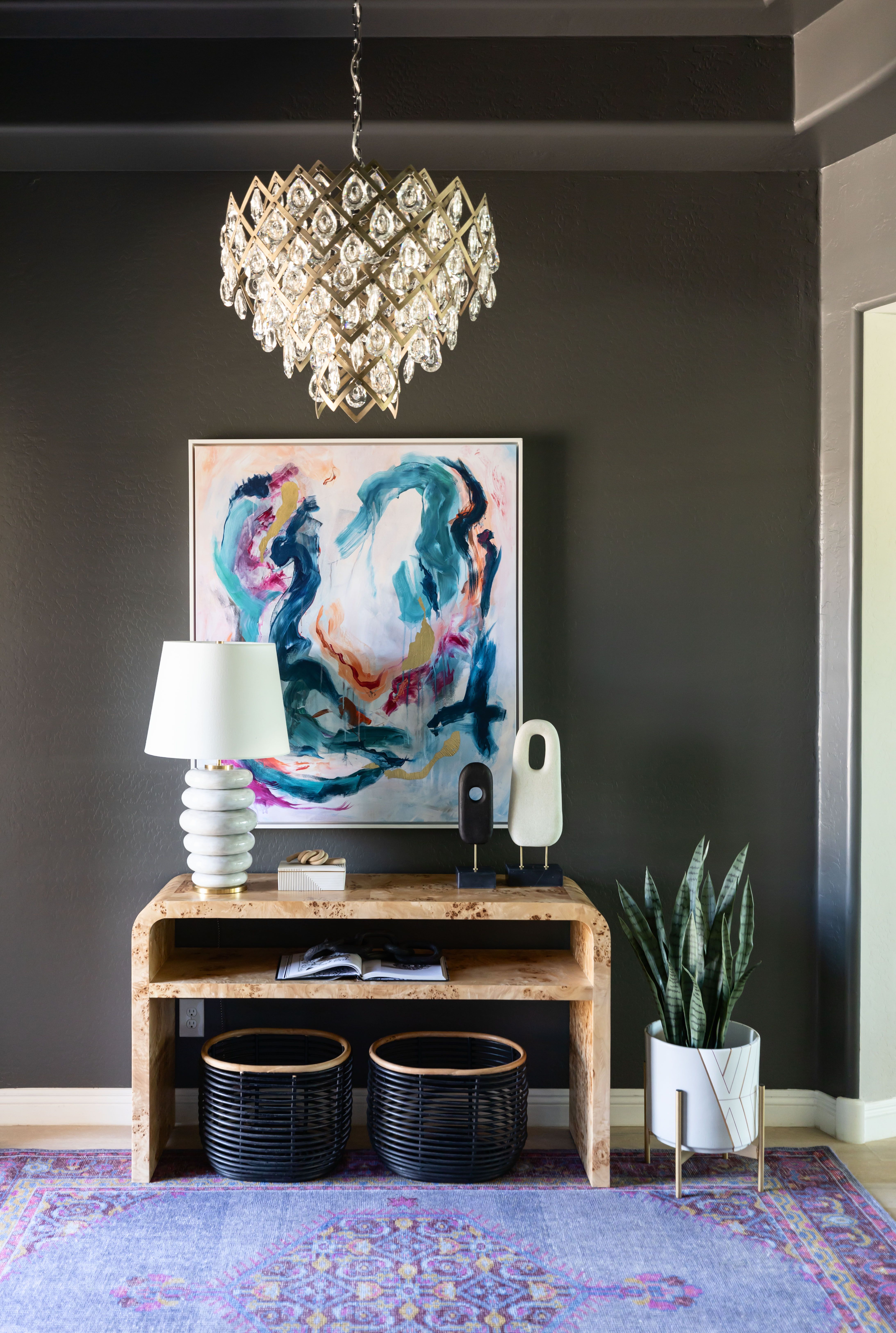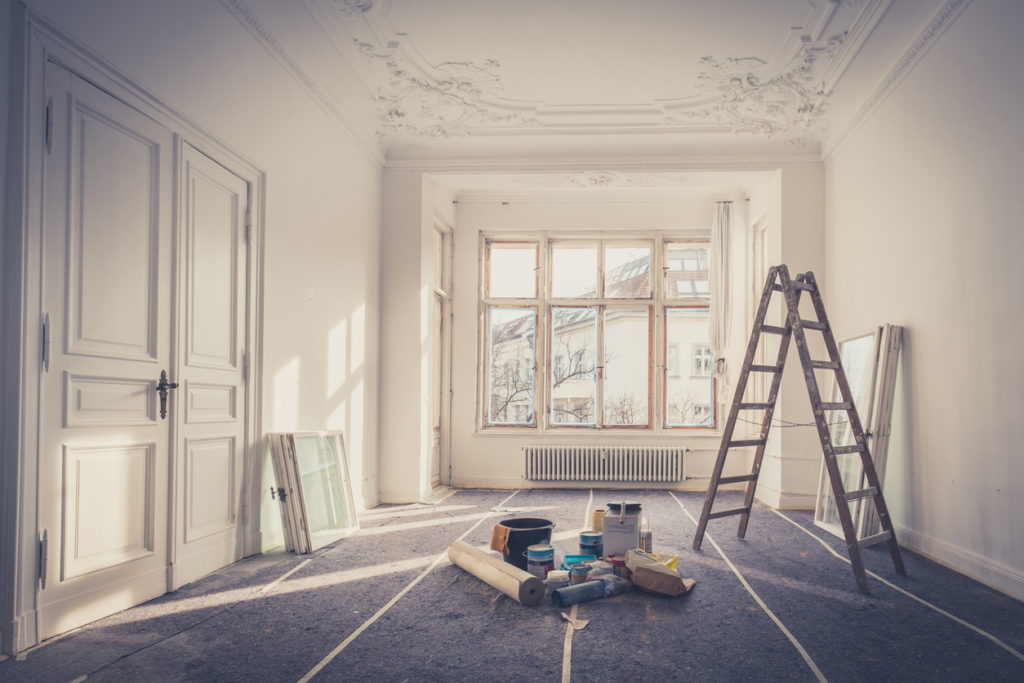Enhance Your Interior Decoration With Comprehensive Color Appointment
The combination of color appointment right into indoor design provides an one-of-a-kind possibility to fine-tune and raise the emotional and aesthetic resonance of a space. By involving with a skilled color specialist, you can navigate the complexities of shade choice, making certain that your options not just complement architectural functions yet also resonate with personal style and emotional influence.
Advantages of Shade Appointment

Furthermore, shade appointment help in maximizing all-natural light and optimizing spatial understanding. Lighter hues can make a room appear more large, while darker shades create an intimate setup. Cleveland Metro Painting Specialists. This strategic application of shade can considerably affect the overall setting of any type of indoor room
Furthermore, specialist consultants possess an extensive understanding of ageless classics and present fads, making certain that the chosen shades will remain enticing over time. This foresight can conserve clients from costly redesigns in the future. Lastly, color assessment encourages customers by providing them with a clear vision and instructions, fostering self-confidence in their style options and eventually causing a more enjoyable and successful interior decoration result.
Comprehending Shade Psychology
The importance of shade psychology in interior decoration can not be overstated, as it explores the psychological and emotional results that different hues can evoke in individuals. Shades can influence state of mind, habits, and also performance, making them a vital consideration in any kind of layout project.
For example, warm colors such as red, orange, and yellow are frequently related to energy and heat. They can promote sensations of exhilaration and comfort, making them ideal for social areas like living rooms or kitchen areas. On the other hand, awesome shades like blue, green, and purple have a tendency to stimulate calmness and tranquility, making them excellent for bed rooms or meditation areas.
In addition, the usage of neutral tones can develop a balanced environment by permitting the bolder shades to attract attention without overwhelming the senses. Recognizing these mental effects enables designers to develop spaces that not only look visually pleasing but likewise advertise emotional health.
Incorporating color psychology into indoor style involves a thoughtful option of hues tailored to the intended function of each space, inevitably boosting the general experience for its occupants. This understanding is critical for accomplishing a practical and harmonious indoor atmosphere.
The Color Wheel Described
It comprises main colors-- red, blue, and yellow-- that can not be developed by mixing various other colors. Tertiary shades result from mixing a key and a secondary color, leading to tones such as red-orange and blue-green.
The shade wheel helps developers comprehend the partnerships between colors, including complementary, analogous, and triadic plans. Complementary colors, located opposite each various other on the wheel, create vivid contrasts that can energize an area.
Making use of the shade wheel in indoor style not just improves aesthetic appeal but also evokes certain emotions and environments, making it a critical referral for color appointment. Understanding these connections eventually empowers developers to create areas that are both aesthetically exciting and functional.
Picking the Right Palette
Usually, picking the appropriate scheme is a crucial variable in accomplishing an effective interior decoration project. A well-chosen color scheme can combine a room, enhance its functions, and stimulate desired feelings. To begin, think about the purpose of the area. Various areas serve different functions and require combinations that reflect their designated usage; as an example, tranquil colors such as soft blues or greens function well in bedrooms, advertising relaxation.
Next, consider the all-natural light offered. Light can drastically modify how shades show up, so it is necessary to analyze the room at various times of the day. Furthermore, consider existing architectural aspects and furnishings. An unified scheme needs to enhance these attributes, developing a cohesive appearance throughout the space.
When picking shades, use the 60-30-10 guideline, which suggests that 60% of the area should be a leading shade, 30% check my reference a second color, and 10% an accent shade. This ratio ensures balance and aesthetic passion (Cleveland Metro Painting Specialists). Ultimately, example shades on the walls before dedicating, as this enables you to see how the shades engage with one another and the total atmosphere they produce in your interior decoration project.
Dealing With a Shade Professional

When dealing with a color specialist, the process commonly starts with a first appointment. Throughout this conference, you'll review your vision, preferences, and the existing components in your room. The expert will examine your Your Domain Name demands and may advise particular color combinations that align with your goals.
After developing an instructions, the expert will supply samples and visual aids to help you picture the recommended color plans. This step is important, as shades can show up differently under varying lights conditions.
In addition, a shade specialist can lead you in picking corresponding home furnishings, art work, and devices to integrate with your selected combination. By collaborating very closely, you can accomplish a refined aesthetic that raises your interiors and produces a welcoming ambience. Eventually, the expertise of a shade expert can substantially enhance the overall effect of your style task.
Conclusion
In summary, extensive color assessment serves as a crucial tool for improving interior design. By leveraging expert knowledge of color psychology and spatial dynamics, a customized shade palette can be developed to evoke certain feelings and create an unified setting.
By involving with a skilled shade professional, you can browse the complexities of color choice, guaranteeing that your options not just enhance building attributes however additionally reverberate with personal design and emotional effect. It consists of primary shades-- red, blue, and yellow-- that can not be developed by blending other colors.The color wheel aids developers realize the partnerships in between colors, consisting of complementary, similar, and triadic plans.When selecting shades, use the 60-30-10 policy, which suggests that 60% of the space need to be a leading shade, 30% a secondary shade, and 10% an accent color. By leveraging professional expertise of color psychology and spatial characteristics, a customized shade palette can be established to evoke details emotions and create an unified setting.